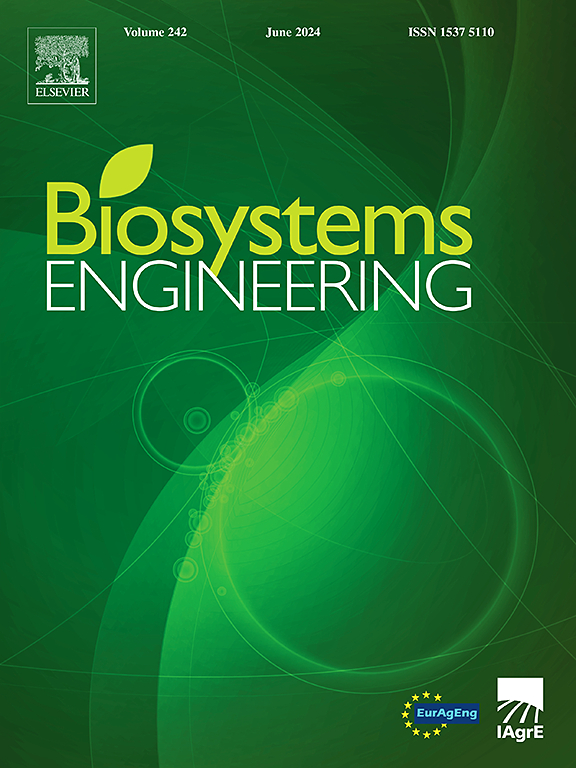Analysis of the seed filling performance influenced by maize seed shape, posture, and suction force
IF 5.3
1区 农林科学
Q1 AGRICULTURAL ENGINEERING
引用次数: 0
Abstract
This study addresses the issue that during the seed filling process of air-suction seed metering devices, maize seeds are randomly adsorbed by suction holes, leading to various filling postures. This randomness contributes to a significant amount of multiple seeding and leakage. The relationship between the maize seed filling posture and the overall filling performance has remained unclear until now. This research establishes, for the first time, the laws governing the impact of maize seed posture and suction force on seed filling performance. A Computational Fluid Dynamics (CFD) model is developed to simulate maize seeds in different postures within a single-phase airflow field. Subsequently, a validation experiment, using a custom-built suction force measurement device, was conducted to analyse the effects of negative pressure, suction distance, and seed posture on the suction force. The findings indicated that discrepancies between the simulated and experimental results of suction force are within 5 × 10−3 N, thereby confirming the accuracy and reliability of the CFD model. Moreover, the relative error of the suction force fitting equations derived from the experimental data was found to be < 10 %. The experiment on seed filling performance also determined that a higher proportion of maize seeds lying flat in their filling posture correlated positively with the seed filling pass rate of the metering device.
玉米种子形状、姿态和吸力对灌浆性能的影响分析
本研究解决了空气吸式排种器在充种过程中,玉米种子被吸孔随机吸附,导致充种姿势不同的问题。这种随机性导致了大量的多次播种和泄漏。玉米种子灌浆姿态与整体灌浆性能之间的关系目前尚不清楚。本研究首次建立了玉米种子姿态和吸力对种子灌浆性能影响的规律。建立了一种计算流体动力学(CFD)模型,用于模拟玉米种子在单相气流场中的不同姿态。随后,利用定制的吸力测量装置进行验证实验,分析负压、吸力距离和种子姿态对吸力的影响。结果表明,模拟结果与实验结果的差异在5 × 10−3 N以内,验证了CFD模型的准确性和可靠性。此外,由实验数据推导出的吸力拟合方程的相对误差为<;10%。灌浆性能试验也表明,玉米种子在灌浆姿势中平躺的比例越高,灌浆装置的灌浆合格率越高。
本文章由计算机程序翻译,如有差异,请以英文原文为准。
求助全文
约1分钟内获得全文
求助全文
来源期刊

Biosystems Engineering
农林科学-农业工程
CiteScore
10.60
自引率
7.80%
发文量
239
审稿时长
53 days
期刊介绍:
Biosystems Engineering publishes research in engineering and the physical sciences that represent advances in understanding or modelling of the performance of biological systems for sustainable developments in land use and the environment, agriculture and amenity, bioproduction processes and the food chain. The subject matter of the journal reflects the wide range and interdisciplinary nature of research in engineering for biological systems.
 求助内容:
求助内容: 应助结果提醒方式:
应助结果提醒方式:


